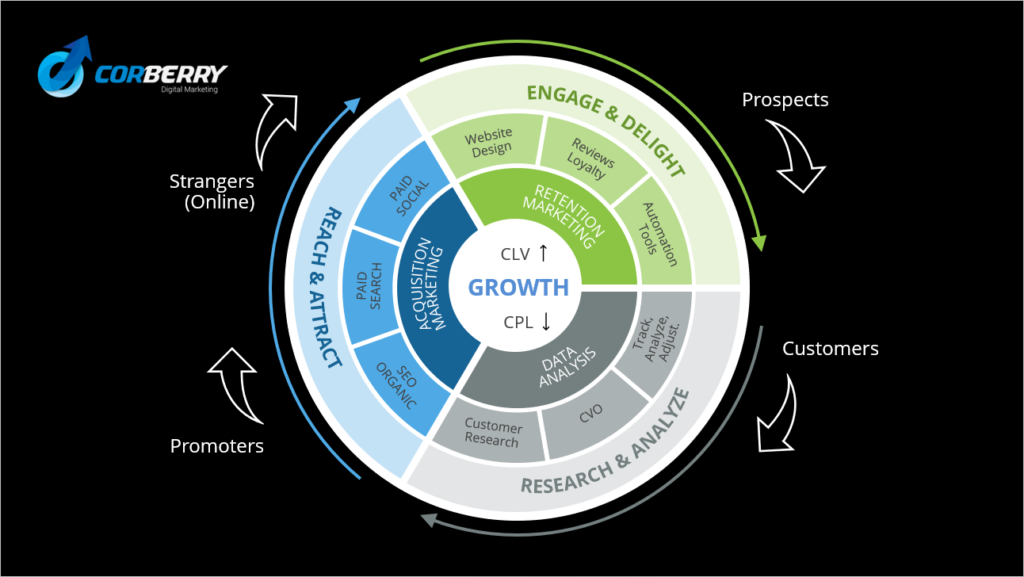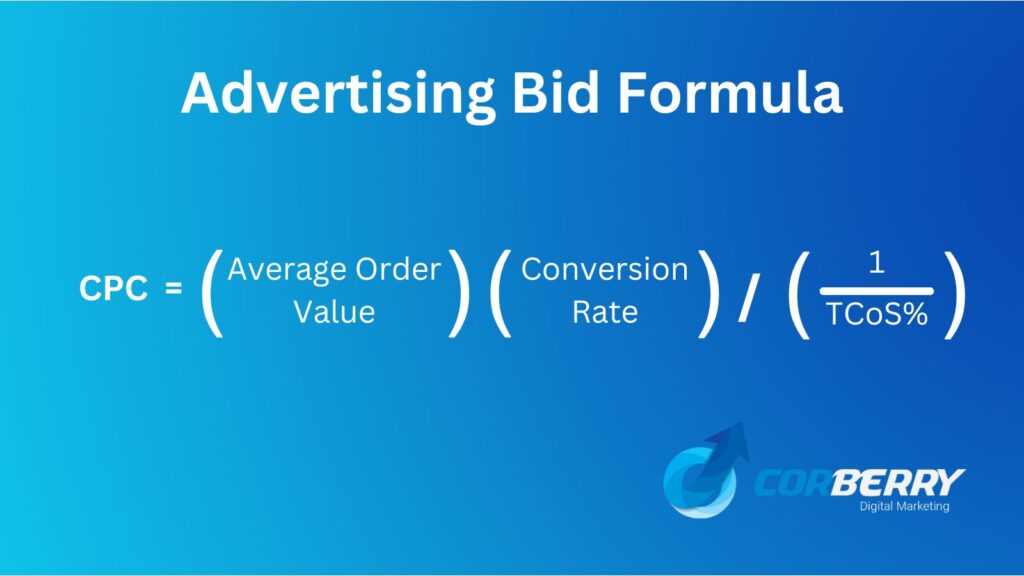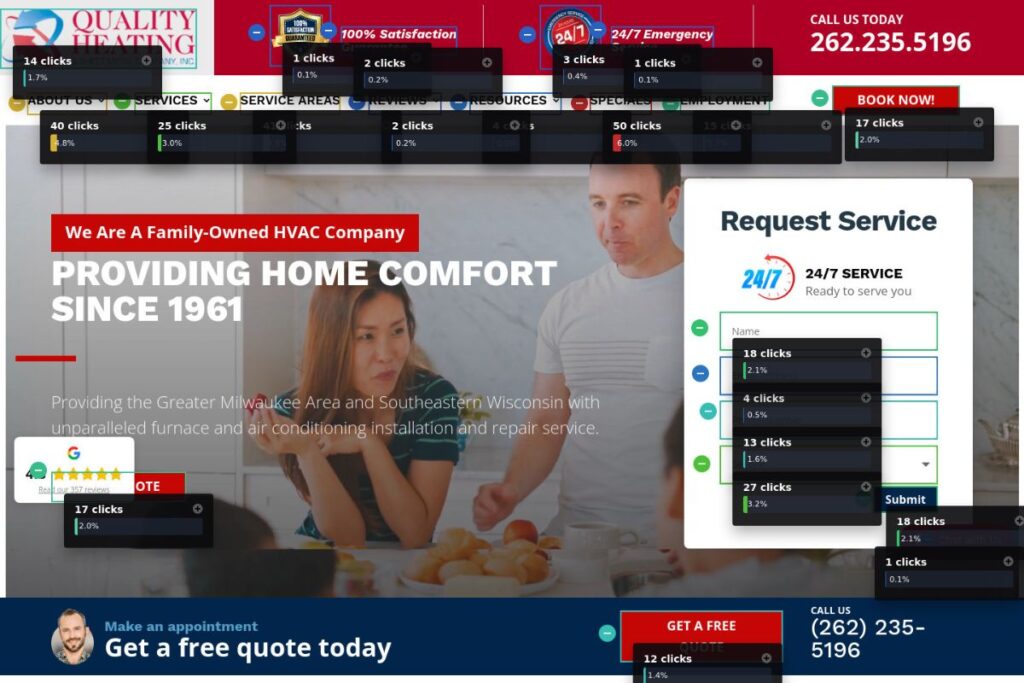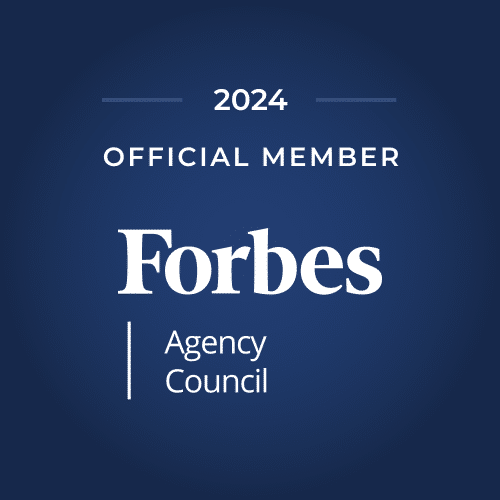Ever wondered why some websites seem to just work? Like, you land on them, and before you know it, you’re giving the company a call, scheduling a consultation, clicking that ‘Buy Now’ button, or signing up for a newsletter. You’ve been converted from a casual visitor into a potential customer.
That is the power of a well-designed, high-converting website. It’s not magic, nope! It’s about understanding your audience, offering them value, and making their journey on your site as smooth as possible.
Stick around because we’re about to dive into the art and science of building a website that converts. Ready to turn your website into a conversion machine? Let’s get started!
First Things First
It’s always helpful to kick things off with a solid definition. In the digital marketing realm, a “conversion” refers to a specific action taken by a website visitor that aligns with the desired outcome set by the website owner.
Depending on the context, this could mean various things – it may refer to a visitor scheduling HVAC maintenance, using your plumbing cost calculator, or even filling out a contact form for smart home installation. Essentially, when visitors perform the intended action, they are said to have “converted.”

Conversion is integral to the customer journey model, fitting neatly within the ‘Engage & Delight’ and ‘Research and Analyze’ stages. Potential customers, or “strangers,” are initially drawn to your website through various attraction strategies. Once they land on your site, the ‘Engage & Delight’ phase begins. This is where conversion plays a pivotal role. A well-designed website coupled with persuasive content, positive reviews, and automated tools can prompt these visitors to take the desired action, thus converting them into prospects.
The ‘Research and Analyze’ stage is where the effectiveness of these conversion strategies is evaluated. Tools and data analytics are used to understand the buyer persona and optimize customer value. Tracking and analyzing conversions helps identify what’s working and what isn’t, allowing adjustments to be made to improve the overall strategy.
The Value of a Conversion
The ultimate goal of improving conversion rates is twofold: It increases the Customer Lifetime Value (CLV) – the total net profit a company makes from any given customer, and reduces the Cost Per Lead (CPL) – the amount it costs your marketing organization to acquire a lead. Both these metrics are crucial to the profitability and growth of any business.
By enhancing conversions, businesses can maximize their return on investment and ensure sustainable growth. Here’s an example.
What is the worth of a booked job? Let’s assume that a job generates $2,500. Additionally, let’s assume that it takes 20 visitors to land one sale, resulting in a 5% conversion rate. Based on these assumptions, the value of a visitor is then $125.
If your goal is to drive $1,000,000 in incremental business, you will need 400 new jobs. To generate 400 new jobs, you require 8,000 visitors to your website.
Why Does It All Matter
Many home services companies make the mistake of blindly investing in Google Ads, only to see their efforts go to waste. They fail to grasp the true purpose of a website. While they may hire a web designer, they overlook the importance of a conversion or home services specialist. As a result, their websites are not optimized for conversions, and the results or lack of are not feed back to Google, which further exacerbates the issue.
Moreover, conversions matter as they’re the bid formula for paid ads. To succeed in online bidding, the key is to be the one that can afford to pay the highest cost per click at the top of search.

However, it’s crucial to consider two factors: Conversion rate and the value of your service. Therefore, having a high-converting website is essential. Ensuring that the conversion value feeds back into Google Ads acts as a potent signal that ultimately decreases total campaign costs while increasing effectiveness. Win-win, wouldn’t you say?
The End Result?
In the absence of data-backed CRO (Conversion Rate Optimization), home services business owners must find a way to make sense of unstructured data, which -quite frankly- is 100% impossible, even to a trained eye.
Untracked marketing spend, poor ROI and empty job boards are just some of the many consequences of overlooking CRO. Such unspoken problems may seem minor at first, but they can quickly snowball into bigger issues that are not so easy to fix. How to put an end to all this? Call tracking and appointment scheduling software are paramount in tracking marketing spend and measuring conversions from various channels.
There are two approaches to driving more sales: spend more money to increase your marketing efforts or improve your conversion rate to maximize sales from the existing traffic. At this point, we should mention that when it comes to HVAC sites, a good conversion rate generally falls between 5-15%. As you can see, it should all be backed by data to make room for better decision-making.
Getting Your Website to Do the Heavy Lifting
We’re a premier web design company that serves companies all across the nation. Any web designer can create a website, but here at Corberry Digital Marketing we go beyond that. We build websites that look great and turn visitors into customers. That’s a pretty significant difference.
So let’s get started. Whether building a new website from scratch or revamping an existing one, these tips will help you create a high-converting website that works for your business and your audience.
And hey, don’t worry if you’re not super tech-savvy – we’ll break down the process in simple steps so you can easily follow along. Ready? Let’s go!
Minimizing Choices
When it comes to solid User Experience (UX), less is often more. Offering too many options can lead to decision fatigue and overwhelm your visitors. Instead, focus on creating a clear and concise website that guides users toward the end goal – conversion.
Limiting the number of choices and distractions can help your visitors make decisions quickly and confidently. This could mean streamlining your navigation menu, simplifying your call-to-action buttons, or removing unnecessary elements on your pages.
Think about it – would you rather be presented with 20 different button options or just two? Usually, the simpler option leads to a better user experience and higher conversions.
Understanding Your Audience
It’s crucial to know who your target audience is. Who are they? What problems do they have? What motivates them? The more you understand your audience, the better equipped you’ll be to create a website that speaks directly to them and addresses their needs.
So, take some time to research and define your target audience. Conduct surveys, analyze data, or even contact your existing customers for insights. This step will ensure that your website is tailored to the people who matter most – your potential customers.
Providing Legitimate Value
Let’s face it – people are always looking for ways to save time and money. By providing value through discounts, promotions, or exclusive deals on your website, you can entice visitors to take action and purchase.
But providing value doesn’t always have to mean discounts. You can also offer informative content, free resources, or helpful tips that cater to your target audience’s needs and interests. By providing valuable content, you not only establish trust with your visitors but also position yourself as an authority in your industry.
Be bold, think outside the box, and get creative with how you provide value on your website. Your visitors will appreciate it and are more likely to convert because of it.
Including Social Proof
In today’s digital age, reviews and testimonials hold a lot of weight when making purchasing decisions. People want to know what others have experienced before they commit to buying something.
That’s why it’s important to include social proof on your website, whether it’s through customer reviews, ratings, or even influencer endorsements. This not only helps build trust with your visitors but also gives them more confidence in the quality of your products or services.
Don’t be afraid to showcase positive feedback from happy customers – it can make a big difference in convincing potential buyers to take action.
Strong “Hero” Section
Your website’s hero section is the first thing visitors see when they land on your page. It should be attention-grabbing, visually appealing, and effectively communicate what your brand or business is all about.
Use high-quality images or videos and concise, compelling copy to draw in your audience and make a strong first impression. This is also a great place to showcase any unique selling points or benefits of your products or services.
Remember, you only have a few seconds to capture a visitor’s attention – make it count with a powerful hero section.
Personalizing the Experience
In a sea of generic websites, personalization can set you apart and create a more memorable experience for your visitors. By tailoring content and recommendations based on a user’s browsing history or preferences, you can make them feel seen and understood.
Personalization doesn’t have to be complex, either. Simple gestures like using a visitor’s name in the website’s messaging or offering personalized product recommendations can go a long way in creating a positive and engaging experience.
Avoid going overboard – nobody likes feeling spammed or invaded by too much personalization. Use it strategically and sparingly for maximum impact.
Building For Search Engine Optimization
Incorporate SEO techniques into your web design to ensure your website ranks well in search engine results and reaches a wider audience. This can include using relevant keywords, optimizing page titles and descriptions, and creating high-quality content.
But don’t compromise user experience in pursuit of good SEO – always prioritize creating valuable, user-friendly content first and foremost. After all, the ultimate goal is to engage and convert visitors into customers.
Designing With Results In Mind
Now, let’s talk design. Your website should look visually appealing and be designed for conversions – whether that’s making a purchase, scheduling a consultation, filling out a form, or signing up for a newsletter.
Keep your layout clean and uncluttered, use high-quality images and videos, and make it easy for visitors to navigate your site. Add clear call-to-action buttons or forms throughout the site to guide users toward where it matters most for your bottom line.
PRO SEO Tip: Don’t forget about mobile responsiveness. With more people accessing websites through their phones, ensuring that your website looks great and functions smoothly on all devices is essential. If you want to test whether or not your site is optimized properly, click here for access to Google PageSpeed Test. Get in touch with our team to help you make sense of the results.
Choosing the Perfect Colors
Colors play a significant role in web design as they evoke emotions and convey meaning. When choosing colors for your website, consider your brand’s personality, your target audience, and the message you want to convey. For example, blue represents trust and reliability, while red evokes urgency and action. Keep these in mind when selecting colors for your website’s overall aesthetic.
Additionally, be mindful of accessibility guidelines when choosing colors to ensure visitors can comfortably view your website. Use contrasting colors for text and background to improve readability, and avoid using color alone to convey important information.
The Rule of Thirds
A common rule in photography and design, the rule of thirds suggests dividing an image into nine equal parts using two horizontal and two vertical lines. The intersecting points where these lines meet are known as “power points” and serve as focal points for the viewer’s eye.
Using this technique, you can create balance and interest by placing elements at these power points or along imaginary lines. It’s a simple yet effective way to enhance the visual appeal of your website.
Powerful CTA Buttons
A call-to-action (CTA) button is crucial in converting visitors into customers. It should be visually appealing, easy to find, and communicate the action you want the user to take. Use strong action words like “Buy Now,” “Sign Up,” or “Get Started” to encourage users to take immediate action.
Additionally, consider using contrasting colors for your CTA buttons to make them stand out and catch the visitor’s attention. Keep them short and straight to the point so that users know exactly what they click on and why. Remember, a powerful CTA can make all the difference in driving conversions for your website.
The Power of White Space
White space, also known as negative space, refers to the empty areas around and between elements on a webpage. While it may seem counterintuitive, white space is an essential design element that can greatly improve readability and user experience. It allows for visual breathing room, making it easier for visitors to focus on the content without feeling overwhelmed.
Don’t be afraid to use generous amounts of white space in your website design. It creates a clean and modern look and helps guide users’ eyes to important information or elements on the page. Remember, less is often more when it comes to white space.
Incorporating Visual Hierarchy
Visual hierarchy refers to organizing elements on a webpage in order of importance. Using size, color, contrast, spacing, and other design techniques can create a clear visual hierarchy that guides users to the most important elements on your page.
Start by determining the main goal of your webpage and then use design elements to highlight and draw attention to it. Use larger fonts, bold or bright colors for important headings, and smaller fonts or muted colors for secondary information. Remember, a well-structured visual hierarchy can greatly improve user experience and make your website more effective in achieving its goals.
Keep It Consistent
Consistency is key to creating a professional and visually appealing website. Make sure to stick to a consistent color scheme, typography, and design style throughout all pages of your site. This will create a cohesive look and help establish brand recognition with visitors.
In addition, keep consistency in mind when it comes to spacing and alignment. Ensure elements are aligned properly and there is enough white space between them. This will help create a clean and organized look that is easy for users to navigate.
Testing and Optimizing
Once your website is up and running, testing and optimizing it continually for better performance is crucial. This includes checking for broken links, monitoring site speed, and testing elements such as headlines, images or calls to action.
You can also use tools like Google Analytics to track user behavior on your site and gain insights into what’s working and what needs improvement. Use this data to make informed adjustments that will lead to higher conversions.
Making Sense of the F Pattern
Studies have shown that most users scan websites in an F pattern, meaning they first read across the top of the page, then down the left side, and finally across the middle. This is important to keep in mind when organizing your web page elements. Place key information or calls to action along these areas for maximum visibility.
Additionally, consider using visual cues such as arrows or bold fonts to guide users’ eyes toward important elements on your page. Remember, you want to make it easy for users to find what they want and take action.
By understanding and utilizing the F pattern, you can better structure your webpage design and improve its effectiveness. So, feel free to experiment with different layouts and placement of elements until you find what works best for your website, or better yet, hire an expert to test things out with HotJar, website heatmaps, and other behavior analytics tools.

The Power of User Feedback
While it’s important to follow best practices and design principles, ultimately, the success of your website will be determined by its users. That’s why gathering feedback from them is crucial in creating a user-friendly and engaging website.
Consider using tools such as surveys, focus groups, or even asking friends and family to test your site and provide constructive criticism. This valuable feedback can help identify areas that need improvement and provide insights into what users are looking for on your website.
Remember, a successful website is one that not only looks great but also meets the needs and expectations of its target audience. So, consider the power of user feedback in shaping your website design.

Crafting Engaging Content
Content is king, as they say, and that’s especially true when it comes to websites. Your content should be informative, engaging, and persuasive – all while staying true to your brand voice and tone. Consider what differentiates you from competitors and how you can communicate that through compelling copy.
A simple trick for creating captivating content is to use storytelling techniques such as anecdotes or case studies. People connect with stories and are more likely to remember and trust your brand if they feel a personal connection.
Critical Business Shifts For A Lean, Mean Lead Generation Machine
An HVAC owner must make three key business shifts to achieve a high-converting website. First, there’s Intent. The first thought that comes to your prospects’ minds as they land on your website is, “Am I in the right place?”. To help them answer this question in the best possible way, it is important to align the content and graphics of the website with the user’s search intent. This involves communicating with the buyer persona in a way that speaks to their core needs and takes into account their psychological state.
Next, there’s Experience. When their internal dialogue confirms that they’re on the right website based on search intent, the next thought that pops into their mind is, “Do I like this website & do I trust it?”. The website should provide a positive user experience that instills trust and likability. This can be achieved through purposeful design, establishing credibility, reducing friction, and incorporating social proof, reviews, guarantee seals, booking tools, and real-time support.
Lastly, as a business owner, you must consider Goal Setting. When your visitors decide that they do in fact trust your website, you have to help them take the necessary action. You should communicate your website’s goals in an easily digestible way and make it easier for them to convert.
The site’s goal should be clearly defined and prominently displayed, and call-to-action buttons should be strategically placed for easy identification. Good CTAs always pass a blink test with flying colors – I should know what to do in the blink of an eye. They provide clear, concise instructions and a wonderfully fluid user journey that makes everything easier for the end user.
It is important to identify any areas of weakness or leaks in the user journey, understand user behavior, and optimize actions that drive higher conversions. Typically, these are low-commitment as they’re the first step towards a relationship with your brand. Thankfully, our cutting-edge tools and expert team can help you achieve these goals and take your website to the next level.
Final Words
Designing a successful website goes beyond aesthetics; it’s about creating a seamless experience for your visitors, ultimately leading them toward conversion. You will soon reap the rewards by crafting engaging content, designing with purpose, and consistently testing and optimizing.
Remember, a successful website is an ever-evolving one. So, don’t be afraid to experiment, analyze data, and make informed changes to keep your website ahead of the game. With these tips in mind, you’re well on your way to designing a website that looks great and converts visitors into customers.
Get In Touch With Our Team
If you want to transform your website into a customer lead generation machine, Corberry Digital Marketing is here to help. Our team of experts can assist you with every step of the process, from creating a stunning design to implementing effective conversion strategies.
Ultimately, we’re here to help you conquer your website, marketing, and financial goals. We have been helping businesses just like yours boost their marketing efforts, increase their visibility, and expand their customer base for several years in a row, and we’ve got the results to prove it.


